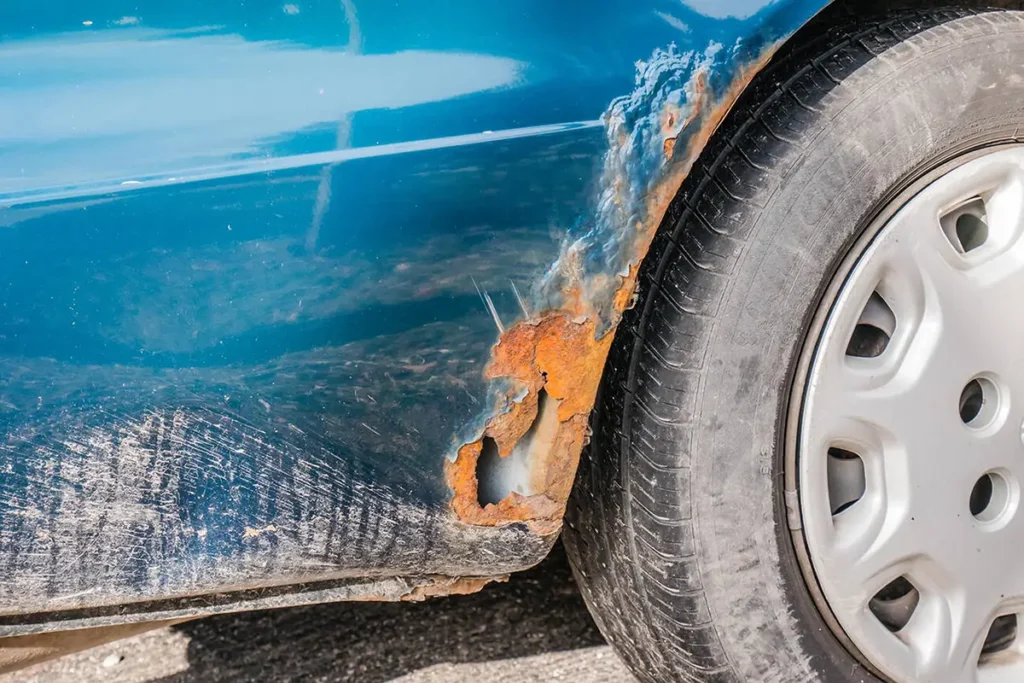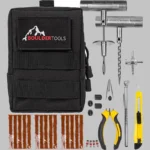Winter can be a car’s worst enemy. Road salt, while essential for safe driving, can turn your vehicle into a rust bucket if you’re not careful. Here’s how to keep your car in top shape during the frosty months.
Pre-Winter Preparation
Before the first snowflake falls, give your car a solid once-over. Wash it thoroughly, then inspect for any paint chips or rust spots. Fix these pronto because salt will make them worse. Think of it as prepping your car for battle.
Wax and Sealant Application
Slap on a good coat of wax to your car’s exterior. It acts like a shield, keeping salt and moisture at bay. For an extra layer of defense, apply a sealant to the undercarriage. This is where the salt loves to hang out and cause trouble.
Regular Washing

When winter hits, washing your car becomes a crucial task. Here’s how often and how to do it:
Frequency
Every 10 days or so, or right after driving through salty slush, give your car a bath. Pay special attention to the undercarriage and wheel wells—these areas are salt magnets.
Daytime Washing
Wash your car during the day when temps are above 40°F. This way, it dries completely, preventing water from freezing on the surface.
DIY Car Wash
If you can, use a DIY car wash with high-pressure hoses. This ensures you can blast away salt from those hard-to-reach spots. Avoid car washes that recycle water, as they might just add more salt to your car.
Driving Habits
How and when you drive in winter can make a big difference in how much salt your car picks up.
Avoid Puddles and Snowbanks
Steer clear of puddles and deep snow. These are often mixed with road salt, and driving through them can pack salt into your undercarriage, making it a breeding ground for rust.
Timing
Try not to drive immediately before and after snowstorms. This is when salt application is at its peak.
Keep Your Distance
Stay back from salt spreaders. Not only can they spray your car with large amounts of salt, but they can also kick up debris that can chip your paint.
Interior Protection
Your car’s interior isn’t safe from salt either. Here’s how to protect it:
Rubber Mats
Use rubber floor mats to trap salt and moisture from your shoes. This prevents the salt from seeping into the carpet and causing rust underneath.
Regular Cleaning
Keep the floors clean and dry. This prevents the buildup of salty slush that can lead to rust and mold.
Parking and Storage
Where you park can impact how much salt your car is exposed to.
Garage Parking: If you have a garage, use it. Parking inside keeps your car out of the elements and reduces salt exposure.
Protective Covers: No garage? No problem. Use a car cover to add an extra layer of protection against the winter elements.
Prompt Repairs and Maintenance
Don’t let small issues become big problems. Here’s what to keep an eye on:
Touch-Up Paint: Fix any paint chips or scratches immediately. Salt can seep into these spots and cause rust to spread quickly.
Regular Inspections: Throughout the winter, inspect your car for signs of salt damage. Catching rust early can save you a lot of headaches down the road.
Undercoating: Consider applying an undercoating to your car’s undercarriage. This adds another layer of protection against salt and moisture.
Stay Informed: Keep an eye on weather forecasts. Knowing when salt trucks will be out can help you decide when to wash your car or avoid driving altogether.
Warning Signs of Salt Damage
Early detection is key to preventing serious damage. Here are some red flags:
- Rust Spots: Look for rust around the wheel wells, doors, and lower sections of your car. Bubbling paint is also a sign that rust is forming underneath.
- Stiff Locks and Windows: If your locks or windows start to feel stiff or freeze, salt might be the culprit. It can interfere with mechanical components, making them harder to operate.
- White Residue: A white, powdery residue on your car’s body or undercarriage during dry weather is a sign of leftover salt. This needs to be cleaned off to prevent corrosion.
Conclusion
Winter driving doesn’t have to be a death sentence for your car. With a bit of proactive care and regular maintenance, you can keep road salt from turning your trusty ride into a rust bucket. By following these steps, you’ll keep your car looking good and running smoothly all winter long.
FAQ Section
How often should I wash my car in winter to prevent salt damage?
Aim to wash your car every 10 days or immediately after driving through salty conditions. Focus especially on cleaning the undercarriage.
What are the signs that my vehicle has been affected by road salt?
Early signs include rust spots on the lower parts of the car, paint bubbling, or flaking. Stiff or frozen locks and windows are also indicators of salt damage.
Are there any environmentally friendly alternatives to road salt?
Yes, alternatives include brine solutions, which use less salt, and mixtures with beet juice or cheese brine, which lower the freezing point of water with less environmental impact.
By staying vigilant and taking these preventative steps, you can keep your car protected from the ravages of road salt and enjoy a smooth ride through the winter months.

Matthew Dowell
Matthew, a seasoned builder from a family of craftsmen, leads Tools Trove. His passion for tools and decades of hands-on experience fuel his commitment to providing expert reviews and insightful content. Whether you’re a pro or a DIY enthusiast, Matthew’s guidance ensures informed decisions in the world of tools.




